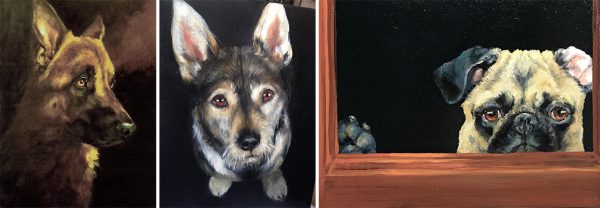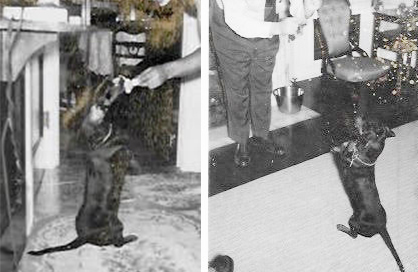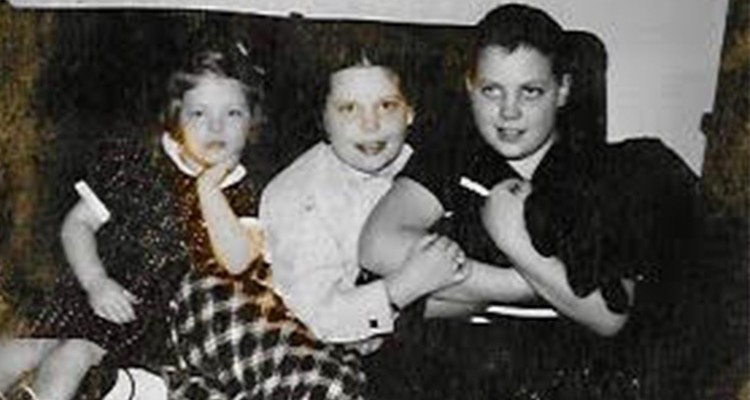If you are a cat lover, you may leave now.
I have never had one, and it’s not that I don’t like them, I simply don’t know them. You are either a cat person, or you are not. There are no in-between feelings about felines. I like to think I am broad-minded, but two out of the three cats I have ever come into close contact with bit me and drew blood.
While dog people can be the most obnoxious creatures on this earth, I proudly cast my lot with them. Millions of dollars are spent on dog treats, clothing, toys and more toys, not to mention the vet fees. Dogs are part of us. Cats consider us as inconvenient accoutrements at best.
I know dogs, I can read their eyes, movements and predict what training I must go through to meet their needs and demands. Yes, they train us — most dogs do anyway.

If you are the alpha in the family, you may get a break from your canine and be permitted to adjust its routine somewhat but only slightly. “Moving the food dish” is not acceptable, ever. Daily rituals are indeed written in stone and mealtimes, walks, naps and bedtimes are set in a rigidly adhered-to pattern. We get into their rhythms, eventually. Thank goodness they are patient.
Gretel was an arrogant girl with a paper trail of famous, titled dachshunds in her lineage. She was brought home to Lynwood Avenue when we were all fairly small, and she was smaller. Dachshunds, at least the “modern” ones, meaning not the ancient Egyptian ancestors, are German and bred for the purpose of hunting badgers and other burrowing animals.
According to H.L. Mencken, “A dachshund is a half-dog high and a dog and a half long.” Stubborn and pigheaded, the breed is hard to train.
E.B. White remarked, “I would rather train a striped zebra to balance an Indian club on its head than induce a dachshund to heed my slightest command.”
“A dachshund is a half-dog high and a dog and a half long.” — H.L. Mencken
Mom and Dad had been away at a medical meeting in Columbus, Ohio, and during the carefree getaway weekend, they decided we needed a pet. There would be many recriminations about that rash move over the long years of the dog’s life. Gretel even outlived mother. They had a mutual understanding that bordered on resentment at times as Gretel was never really housebroken. They got along and mostly stayed out of each other’s way.
A LOVE LIKE NO OTHER
We loved our dog more than anything. I remember sitting with her in my lap, entreating her never to die. I used to say that to my mom, too, and both of them ended up disappointing me. As children often have anxiety about being abandoned, sometimes an animal we can cradle in our arms provides comfort against those childhood fears.
When any of us needed to hold the dog, or when the dog needed some attention, Gretel was there. She was never denied a lap, a chair or a couch. She was huge as far as dachshunds go, being a standard size. Her ilk is not seen too much anymore as the smaller ones seem to be the most sought-after “style.”
The ideal form of either size is long and sleek. Sleek was never a word we applied to Gretel. She liked food as much as we did and, when not satisfied with her designated meals, would steal food from us and, in her dotage, even was able to knock over trash cans. Every time she was boarded at the vets, she would come back thinner and starving (her word).
Gretel moved with us to the house on the hill in Echo Point Circle, where she was allowed to roam at-will when outside. She stayed within 50 feet of the house, much to my uncle’s dismay as one of her favorite “spots” was beside his asparagus patch next door. The hillside (violet hill) on the other side of the house was a favorite haunt of hers, and she frequently contracted poison ivy because of her low-slung carriage. A black dog with a pink Calamine-smeared stomach was not an uncommon sight in the Circle.
 As she aged, her mobility decreased along with her mental status. She would frequently walk toward the front hall, making the long trek from the kitchen at the back of the house, and stop midway. Of course, we had no way of really knowing what was going on in that head of hers, but it looked from our perspective like she had forgotten her destination and purpose. She would stand in one spot with her head down for long minutes as she pondered her path. If you have ever seen drawings of Eyore from the original “Winnie the Pooh” book, you have seen Gretel in her old age. Large square form, head and tail usually down, deliberate stance.
As she aged, her mobility decreased along with her mental status. She would frequently walk toward the front hall, making the long trek from the kitchen at the back of the house, and stop midway. Of course, we had no way of really knowing what was going on in that head of hers, but it looked from our perspective like she had forgotten her destination and purpose. She would stand in one spot with her head down for long minutes as she pondered her path. If you have ever seen drawings of Eyore from the original “Winnie the Pooh” book, you have seen Gretel in her old age. Large square form, head and tail usually down, deliberate stance.
NOEL MEETS GRETEL
Sometime early in his teenage years, my brother Jim had “acquired” a full-size, official property of the City of Wheeling STOP sign, replete with red background and white lettering. It hung on the back of his bedroom door and inadvertently served several purposes — the distinct rattling of metal against wood alerted all to the arrival and departure of my brother, annoyed most of us in general and perpetually troubled my mother who probably wondered how he had gotten it in the first place.
Gretel slept with my brother in his high four-poster bed — an important fact given the following story.
My future husband, Noel, then just boyfriend, was new to the quirky lifestyle of my family, including the dominance of a low-slung bully in the form of a dog. He had never had a pet of any kind. He came to visit and, living out of town, spent the night. He was put in Jim’s room as it was vacant because my brother was away at college.
Sometime during the wee hours of the night, Gretel decided to go to bed. According to the “morning-after” account, Noel said he was awakened by the bang of the door hitting the wall, a metallic rattling sound and an incoming airborne black streak. Gretel, according to Noel, then hunkered down next to him, her head facing the foot of the bed, her hindquarters nestled next to his head. No introductions were made, no head pat was given, not even a belly rub. Noel spent the rest of the night next to a snoring, farting 45-pound dachshund. Gretel was legendary for her room-clearing flatulence, and when it happened, which was frequent, the words “it was the dog” rang true.
SICK AS A DOG
The middle child (me) is usually the one who enables, keeps the peace and rarely gets the fun gene. Gretel was supposed to be our shared responsibility — you know, feeding, walks, baths, clean up, all the things children promise in the heat of “having to have” a pet. I was the cleanup crew and, at times, slid into the responsibility — if not looking where my feet were going.
Gretel’s bowels were challenged at best. We tried to keep her to a vet-approved diet, but her ability to steal food, raid trash cans, as well as look at us with those eyes and get food under the table from us, in addition to her natural hunting ability (baby rabbits a favorite), she had a mixed diet.
She could sit up and beg. She could sit on her back haunches for minutes. We could even balance a treat on the end of her long nose, and she would catch it while still sitting up. Her favorite treat was shaving cream. Every morning, she would be at sink-side, sitting up until Dad would give her some of the froth from his shaving brush.

I have often credited this early introduction to canine poop in all its forms with having a strong stomach in later life. After cleaning up after dogs and changing thousands of diapers over a 20-year period, I was a pro. The ability to not gag at bodily waste is a dubious but useful talent, I suppose.
Dogs get stomach viruses and after a particularly debilitating session, Gretel needed Pepto-Bismol — vet ordered home remedy. Easy? You would think a house consisting of a medical doctor and nurse would be able to administer a dose of the syrupy cherry liquid to a dog. It took both of them to get the stuff into her mouth. That was the easy part. They waited until they were sure she had swallowed and let go of her muzzle. Pink medicine sprayed all over the kitchen as Gretel shook her head, ears flapping loudly.
Second try, same drill — only this time, Mom gently stroked her throat, encouraging the swallow reflex. Again, Mother held Gretel’s mouth closed. Their eyes locked. The gauntlet had been thrown down. Several minutes ensued in this stand-off staredown between two German-bred females. Releasing the hold on her patient, mother cautiously backed away.
Areas of the ceiling that had not been “pinked” the first time got it the second time. Whether Gretel just decided to let this game end or whether she somehow realized she was eventually going to lose, she swallowed the third dose. The vet said it had probably saved her life.
THE HEARTBREAK
Gretel lived 17 years. She saw us through our childhood, chewed her fair share of things she shouldn’t have, chased up and down the long hallways at Echo Point and hid her bones in the corners of the wingback chair in the living room. She became arthritic and couldn’t climb the steps to go to bed, and we would take turns carrying her up and down the stairs.

It was a cold day in late November, the same month mom died, that she died.
Dad, my sister Posy and I had gone to a meeting of the Company of Historians and Collectors that Dad signed on for months before. It was just a few weeks after Mom died. Several weeks before she died, Mother told us to make sure Dad went to the gathering. He was president of the organization at that time. She had accompanied him on many of his meetings and knew how important the group was to him.
When we came back home, Posy and I drove to the vet with Gretel’s leash to pick her up. We were met with, “Didn’t your dad tell you Gretel died while she was here?” No, he hadn’t. We never had the heart to ask him if he had called to have her put down and just didn’t have the courage to tell us. Gretel was, at that time, completely incontinent, getting sick and probably was ready to leave us, but we weren’t ready to leave her. We cried all the way home, much of that whole year, it seemed as well.
Gretel nested in our laps when we cried ourselves to sleep over a lost love or slight by a best friend. She didn’t care how messy our rooms were. She was always ready to climb into an unmade bed and sleep alongside us, never understanding the tears we cried but being there, that magic unconditional loving lump of fur and gas.
We knew she was more than just a dog. She was us. She knew our habits — good and bad — and provided the balm only a dear friend can offer. Life with us was always on her terms; she could be arrogant and stubborn, but that is part of her breed’s makeup. An old Indian legend says that when a person dies, before he can cross over to the other world, all the animals he has ever come into contact with must pass judgment on his worthiness.
Let’s hope Gretel is in a good mood when it’s my time.
• Anne Hazlett Foreman, an award-winning artist, has been a member of Artworks Around Town for 20 years, having been on the board for the first four years. She also has served as chairman of the Oglebay Institute Mansion Museum Committee; served two terms and was vice president of the West Virginia Independence Hall Foundation; served on the Oglebay Institute Board of Directors, the board of Fort Henry Days and the Wheeling Hall of Fame board; and is a member of the National Society Daughters of the American Revolution. Foreman is a graduate of Mount de Chantal Visitation Academy and attended Wheeling College and Chatham College. She is married to Robert Noel Foreman, and they have six children and several grandchildren.


